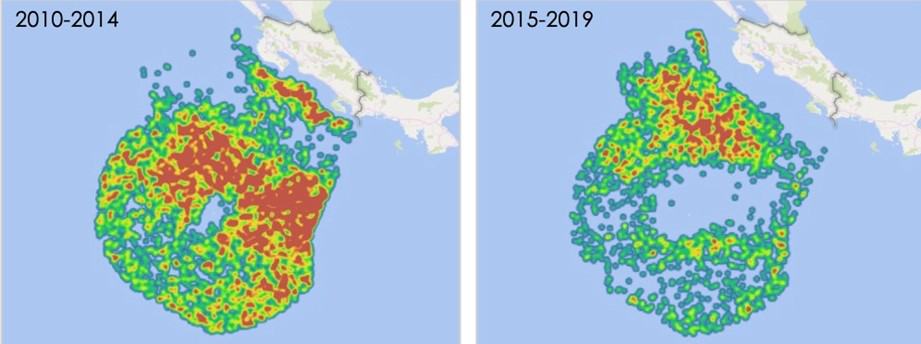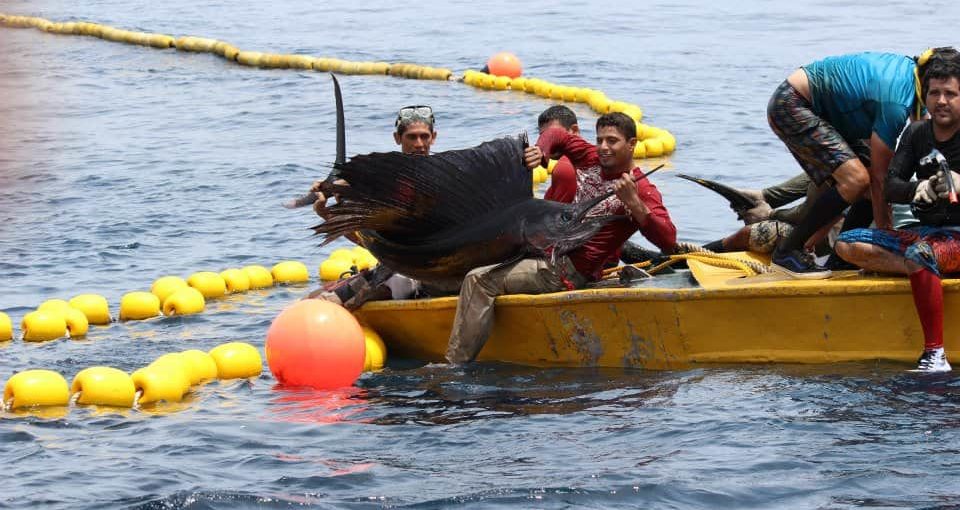Costa Rica tuna cannery’s effect on costal communities
by Todd Staley
Published by The Tico Times
Alimentos Pro Salud S.A., the Puntarenas Company that produces a variety of different brands of canned tuna including Sardimar is one of the largest employers in the area. The claim is they supply around 5,200 direct and indirect jobs in the chain of producing cans of tuna.
This includes people who work directly inside the cannery, to transport people, up to farmers that produce the vegetables that go into one of their popular local items, tuna with vegetables Both the Dun and Bradstreet and Alimentos Salud websites lists them as having 1200 employees in Costa Rica. Dun and Bradstreet reports them producing $104 million in sales. The company cans between 8,000 and 11,000 tons of tuna annually extracted from Costa Rican waters.
The company is also active in community service. They have donated medical equipment to a children´s hospital, support breast cancer research, sponsored beach clean-ups, donated more than 110,000 books to schools and 180,000 cans of tuna during the pandemic.
Sounds like a company anyone would want as a neighbor. The issue is not the company in itself, but how the tuna it produces is delivered to them and the company’s influence on decisions made by Incopesca, who governs Costa Rica’s fisheries as well as other government officials.
Yellowfin tuna is the equivalent of Costa Rica’s Blood Diamond!
Costa Rica Videos
Not so much in human atrocities, more in damage to other marine species that die in the process of catching tuna with purse seine vessels. Costa Rica does not have a purse seine fleet and sells licenses to fish territorial waters to foreign flagged boats. The last few years those licenses have only been given to boats flagged in Nicaragua and Venezuela, countries not exactly known as world leaders in human rights.
There are over 100 different species of fish and marine mammals besides tuna that are captured in the process of purse seine fishing for tuna. Included are dolphins, small whales, sharks, turtles, and several species that affect Costa Rican fishermen directly. These include dorado (mahi mahi), marlin, sailfish, and wahoo among the many. Over the years over 3000 tons of this incidental catch (bycatch) has perished in tuna nets and were thrown dead back in the ocean.
Up until 2014, purse seine boats pretty much had the run of Costa Rican territorial waters outside of 12 miles from the coast. A 2014 decree moved them out 45 miles off the coast (40 miles plus 5 mile buffer zone), as well as protecting various sea mounts and other areas determined to be important to reproduction areas of tuna.
Most of Costa Rica´s National fleet has been limited by law to fish inside 40 miles from the coast. That probably wasn’t so much of an issue decades ago when the regulation was written but the fleets have grown to over 400 longline vessels and over 650 sport and tourist charter boats today, working that stretch of water. There is also nearly 6000 artisanal fishing boats that fish inshore waters up to 3 miles off the beach.
Both the commercial and tourist fishing fleet generate hundreds of millions of dollars to the Costa Rican economy and both have been absolutely crushed by the Covid pandemic. The demand for product fell way off for commercial fishermen with restaurants and small commercial outlets closed. The charter industry came to a screeching halt with the rest of the tourist industry. With the current Covid situation in Costa Rica, the near future is not that bright.
Zoning Works
The original 2014 tuna degree moving the purse seiners from 12 miles to 45 miles minimum off shore was initiated by a conflict between commercial longline fishermen and sport fishermen. The commercial fleet claimed the purse seine industry was killing many of their target species as bycatch.
The sport fishing sector claimed the commercial fleet was targeting fish like sailfish, the most important species to the tourist industry and written in law as a species of tourist interest.. The two sectors worked together and presented a plan backed by science investigation done by the Fedreracion Costarricense de Pesca. (a sportfishing group). It was passed in 2014.
It didn’t take long it start working. Within a couple of years catch records of sport fishing boats showed in improvement in catches of tuna, dorado, and marlin. Tuna, once a rarity in sport fishing catches had become common. The 45 mile limit had become a recruitment area for tuna. The only species that has showed no improvement is sailfish, in fact catches are down.
Then something interesting happened. The red dots of tuna net sets show it plain as day

Up until 2014 the foreign purse seiners pounded the coastal waters just beyond the 12 mile limit. Outside of that the majority of net sets were beyond 170 miles from the coast. Then in 2015 their strategy began to change. The bulk of these sets were associated with dolphins. The boats started setting their nets closer to shore.
Tuna, as well as dorado, marlin, and sailfish are pelagics, meaning they are migratory species. They are always moving, following their food source. Beginning in 2015, if the schools of tuna and other species were unfortunate enough to venture outside 45-miles, they would find a tuna boat flagged from Nicaragua or Venezuela waiting for them. They were netting these fish as they moved in and out of the coastal buffer zone. Zoning has also improved the purse seiner’s efficiency. Their average haul per net set has risen from an average of 12 tons in 2014 to 20 tons in 2019.
There has been a proposed law bouncing around Costa Rica congress for the last two-years regarding tuna reform. The part of the law that most interests fishermen and marine mammal fans is the distance from shore restriction tuna boats will be able to fish in territorial waters.
Jose Maria Villalta is the congressman sponsoring the proposed law and his proposal asks to move the purse seiners out to 80 miles. Both the Executive President of Incopesca and the Camara Costarricense de la Industria Atunera (Catun) only support a move to 60 miles. The tuna cannery is a member of Catun.
Members of the National fishing fleets feel the tuna boats need moved out between 100 to 200 miles minimum depending on who you ask. A look at the map of sets immediately tells us that 150 miles or more would function for everyone just fine and basically the recruitment zone would become larger and eventually benefit all sectors just as well as the 2014 decree has.
In the past the representatives of the tuna industry have threatened to pull up stakes and move the cannery to another Central American country, putting a large group of Costa Ricans out of work if the boundaries were moved. That is an empty threat, as the cost to do so would be tremendous. If they left there would still be a demand for Costa Rican tuna. In fact, another cannery company has already approached some officials in Costa Rica about setting up shop. I think the country could figure out a way to benefit more than only $37 a ton as was discovered in a 2013 study that the country was getting.
It is easy for the congress to make this a win for everybody. Move the tuna boats out to where they used to fish before 2014. Not only will this be in tune with Costa Rica’s plan for better ocean management, but will help National fishermen recover from their present crisis, giving plenty of room for both the commercial fishing and sport fishing groups to work on their differences and both important sectors to the economy could thrive.
It is time for congress to put Costa Rica´s marine resources and its citizens ahead of a private company and foreign interests and win for everyone.
Next week: The conflict between sport and commercial fishermen





















